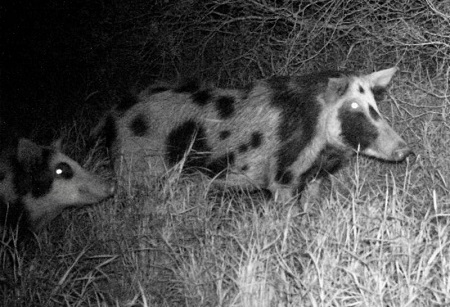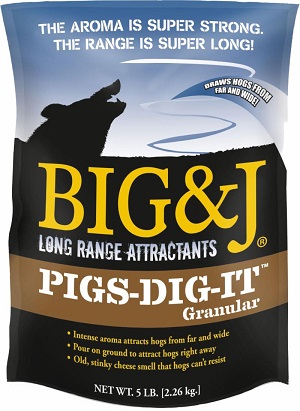 Location, location, location. When it comes to setting up a feeding site for hogs, you need to think like a pig no matter how weird it gets.
Location, location, location. When it comes to setting up a feeding site for hogs, you need to think like a pig no matter how weird it gets.If you were to set a hog trap in the middle of a field you might catch the odd pig, but it isn’t likely to be a mature, well-educated boar. If you think like an old tusker and have a serious look at the terrain and habitat where you intend to hunt, you’ll quickly sort out the secluded travel routes, and hideaways where swine feel secure.
Setting up a feed site on a pig’s terms will mean they are more likely to use it at any time of the day or night. If you’ve ever watched a hog come into a bait in the open, you know they take every precaution to avoid danger before committing to take a step into the open ground. When you try to force a hog to go into the open to feed, it is likely to do so under the cover of darkness.
 Where do pigs spend their day? Tucked in under the shade of thick brush, along creek and wetland edges, and where they aren’t likely to get bumped by predators or humans. When you find these secret spots, you’ll know it. Hogs leave lots of sign so paying attention to tracks, droppings, and rooted up areas, will put you in the zone.
Where do pigs spend their day? Tucked in under the shade of thick brush, along creek and wetland edges, and where they aren’t likely to get bumped by predators or humans. When you find these secret spots, you’ll know it. Hogs leave lots of sign so paying attention to tracks, droppings, and rooted up areas, will put you in the zone.Finding an intersection of hog trails, close to water and cover, is a prime location to set up a feed site. Make sure to have an area to set up a stand or blind downwind of the specific area you tend to feed or set out attractant, like Pigs-Dig-It. The best locations will have an open field or wetland behind your stand where hogs will not want to go in order to circle downwind.
Once you get a spot established, make sure to keep it well stocked with feed. The more pigs there are using a spot, the more competition there will be for food, and the need to get there early.
For more information, please visit www.bigandj.com.
